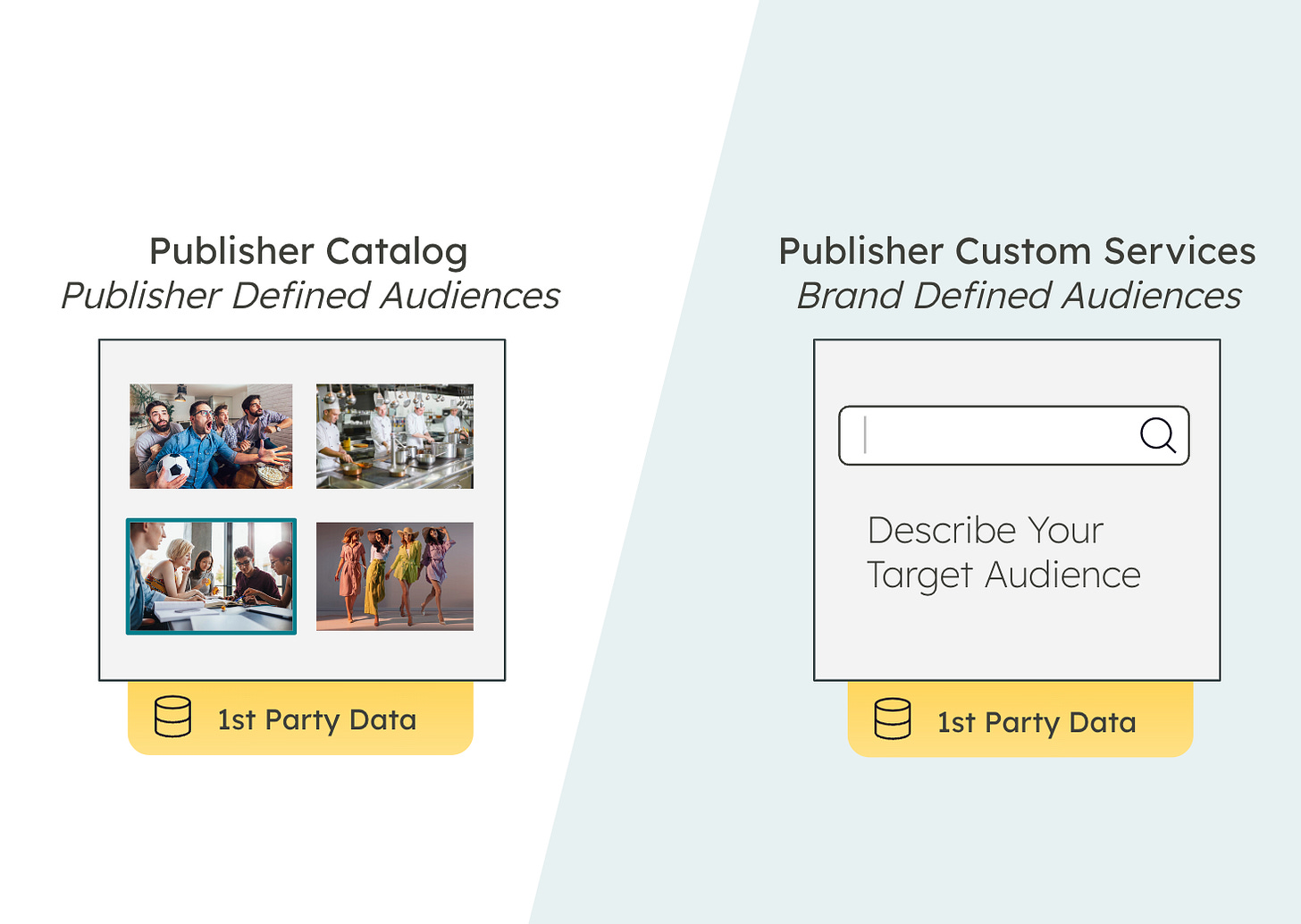Time To Rethink Monetization: 1st-Party Data Audiences for Prospecting
Alright, no need to beat around the bush – we all know the value of 1st-party data.
Companies who have been collecting consented 1st-party data sets are discovering a unique new opportunity: beyond the customer experience (CX) improvement, there is real revenue to be made, from monetization use cases.
Non-traditional publishers with massive knowledge of their customers are building Media Networks. Large grocery retailers (Albertsons, Walmart) are among the first ones who started these initiatives, but they are not alone: Uber stock is finally taking off, and the monetization opportunity is no stranger to that. Times are changing!
This series is for anyone swimming in a pool of 1st-party data and thinking, "Hey, maybe I should start my own media network."
I’ll use the term “Publisher” for the rest of this post, not to exclude any traditional publisher who may be wanting to revisit their own strategy. The goal for today: focus on Prospecting use cases for brands
Audience
In both scenarios described, audiences are created by the publisher using its 1st-party data. The audiences may be enriched with 2nd and 3rd party data.
Scenario 1: Publisher Defined Audiences
In this first scenario, the publisher is pre-defining audiences. The publisher creates a catalog of options, grouping individuals based on interests, demographics, you name it. Brands stroll in and pick their target audience like they're shopping for furniture – it's that simple.
Publisher Operational Costs
Dependent on the granularity and complexity of the audiences:
A small catalog of large audiences will be cheaper to create and maintain, promising more reach for brands.
A larger catalog containing smaller and more targeted audiences will require more effort upfront, but will guarantee an improved precision for brands.
Publisher Revenue From Audiences
Assuming they nailed it with the selected audiences for the catalog, margins are great for publishers: define it once and use it everywhere. Think about the iconic Ikea furniture bought around the world (Billy, Malm, Lack collections).
Scenario 2: Brand Defined Audiences
In this second scenario, the brand is telling the publisher exactly what they want. The audience is still created from the publisher’s data, but following the (precise) instructions from the brand. It's like ordering a custom-made sofa instead of grabbing something off the showroom floor.
Publisher Operational Costs
Much larger costs, as the audience is created from the brands’ criteria. The operational costs may vary based on the technology available, ease of translation from the brand’s request to a publishers data model etc.
Publisher Revenue From Audiences
Made-to-order audiences can be charged as a premium. The more efficient your internal process is to fulfill the order, the higher the margin will be!
Think About Your Properties And… Beyond!
There's more! While most publishers are using these audiences on their own properties, some are integrating with other networks, expanding the opportunities. Take Yelp Audiences, for example. Brands can obtain high intent prospects and target them outside Yelp’s properties.
From a recent survey, TripeLift and Emarketer highlighted that off-site advertising will continue to grow over the next few months.
🔑 In the world of publishing and media networks, you can offer both an Ikea-style catalog and custom services. Make sure to understand what your customers would value most, and let your data do the work!


